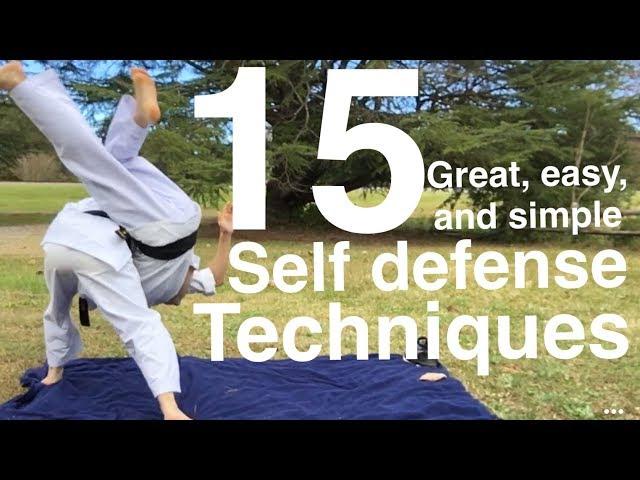Table of Contents
- Understanding the Psychology of Safe Retreating in Self-Defense
- Essential Physical Techniques for Maintaining Distance During an Encounter
- Utilizing Environmental Awareness to Enhance Your Escape Strategy
- Practical Drills and Training Tips for Confident and Effective Retreating
- In Conclusion
Understanding the Psychology of Safe Retreating in Self-Defense
At the heart of effective self-defense lies not just physical skill, but a profound understanding of the mental dynamics that govern safe retreating. When confronted with danger, the mind often oscillates between fight, flight, or freeze reactions. Mastering the psychology behind these instincts empowers individuals to make calm and calculated decisions, transforming potentially chaotic moments into opportunities for strategic withdrawal. Recognizing that retreat is not a sign of weakness but a tactical maneuver can shift your mindset, encouraging a focus on survival and long-term safety rather than confrontation.
Safe retreating also requires cultivating emotional resilience and situational awareness. Key psychological components include:
- Confidence: Trusting your judgment to disengage without hesitation.
- Clarity: Maintaining focus under duress to identify escape routes and hazards.
- Control: Managing adrenaline responses to prevent panic-driven mistakes.
Integrating these mental tools with physical techniques ensures retreating is a deliberate and empowered choice – a critical skill that protects your well-being in any hostile encounter.
Essential Physical Techniques for Maintaining Distance During an Encounter
When the goal is to keep an adversary at bay, mastering specific physical maneuvers can provide both space and safety. Techniques such as the front push kick are practical tools to create immediate distance. Executed correctly, this move targets the opponent’s midsection or knee area, delivering enough force to deter an advance without engaging in close combat. Equally effective is maintaining a strong, balanced stance with feet shoulder-width apart, enabling quick backward steps or lateral movements that keep you agile and ready to respond. Incorporating these basic yet powerful actions into your self-defense repertoire allows you to control the flow of an encounter and reduce risk.
Complementing these techniques are less obvious but crucial skills like hand positioning and body angles. Keeping your hands up in a defensive posture, with palms ready to block or parry, can stop unwanted contact from escalating. Turning your body slightly away rather than facing the attacker head-on minimizes your target profile, making strikes less effective. Combine this with a keen awareness of your surroundings to anticipate escape routes, giving you the upper hand in decision-making during high-pressure moments. These refined physical habits bolster your ability to maintain control and secure a safe retreat.
- Front Push Kick: Quickly extends the lead leg to push an opponent away.
- Balanced Stance: Ensures stability and quick mobility.
- Hand Guard: Protects vital areas and intercepts strikes.
- Angled Body Position: Reduces vulnerability to direct attacks.
- Environmental Awareness: Identifies escape possibilities and obstacles.
Utilizing Environmental Awareness to Enhance Your Escape Strategy
Understanding your surroundings is crucial when executing a strategic retreat. By developing a keen sense of environmental awareness, you can quickly identify safe exit points, potential hazards, and advantageous terrain. Pay close attention to elements such as lighting, cover spots, and crowd density, all of which can either facilitate or hinder your escape. A well-practiced habit of scanning the environment continuously allows you to anticipate the movements of a potential aggressor and adjust your path accordingly, enhancing both efficiency and safety during self-defense situations.
Integrating environmental cues into your escape plan also means harnessing natural and man-made assets to your advantage. Consider the following strategies:
- Utilize shadows and obstacles to conceal your movement and reduce visibility.
- Leverage noise sources like traffic or crowds to mask your retreat.
- Plan multiple escape routes based on differing environmental conditions to stay unpredictable.
- Identify safe havens, such as stores, public spaces, or well-lit areas for temporary refuge.
Practical Drills and Training Tips for Confident and Effective Retreating
Building confidence in retreating starts with consistent and realistic practice. Integrate scenario-based drills into your routine that simulate unexpected encounters, allowing you to rehearse quick decision-making under pressure. For example, practice moving backwards while maintaining eye contact and keeping your hands free for defense or communication. Pair this with footwork exercises-such as kite steps and lateral slides-to enhance your ability to maneuver smoothly without losing balance or speed. Don’t underestimate the power of muscle memory, which can be developed through repetitive, focused training sessions.
Complement physical drills with mental conditioning techniques to sharpen situational awareness. Use shadow retreating sessions where you mentally visualize a threat and practice withdrawing safely while scanning your surroundings for exit points. Incorporate breath control and calming practices between drills to maintain composure during sudden stress. To accelerate progress, consider including:
- Partner resistance drills for realistic pressure and feedback
- Video recording to analyze body posture and retreat angles
- Timed retreats to boost speed and efficiency
- Combining communication cues with retreating to alert bystanders or law enforcement
In Conclusion
Mastering self-defense techniques for safe retreating is about more than just physical skills-it’s about cultivating awareness, confidence, and the judgment to prioritize your safety above all else. By practicing these strategies regularly, you empower yourself to respond effectively and exit potentially dangerous situations with control and composure. Remember, the best defense is one that ensures you stay safe and unharmed. Keep honing your skills, trust your instincts, and never underestimate the power of a well-executed retreat. Your safety is worth every effort.Check Our Other Blogs
- StunGun – Your Trusted Source for Stun Guns, Laws, and Self-Defense Tips
- PepperSprayLaws – Your Trusted Resource for Pepper Spray Information
- StunGunLaws – Your Trusted Guide to Stun Gun Legality and Safety




